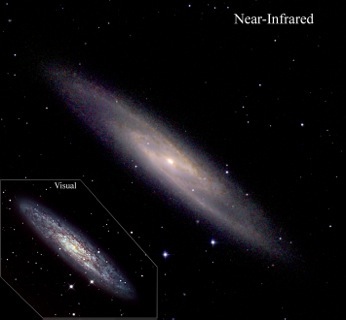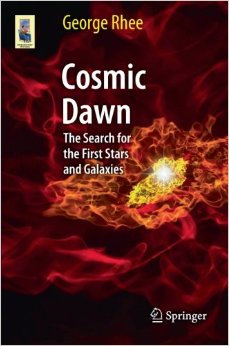George Rhee
Education
B.A. Cambridge University, 1982 Ph.D., Astronomy, Leiden University. 1989 Extragalactic Astronomy
Research Interests

George Rhee's current focus is to determine the precise distribution of dark matter in spiral galaxies. Galaxy formation theories predict that galaxies from in dark matter halos. With our collaborators at New Mexico State University we are studying the rotation of galaxy disks in these halos. The image on the right shows a nearby spiral galaxy observed in the infrared and the optical. The near-infrared image shows the older stars and the presence of a bar. The optical image (inset) shows a morphology influenced by the repsence of dust. We wish to measure the deatiled dark matter distribution in galaxies such as this one. The galaxy covers an area in the sky roughly equal to the full moon. We are studying the rotation of these galaxies in order to infer the distribution of dark matter in their halos. We compare the observed dark matter distributions in detail with those predicted by our galaxy formation models. The models are run on computers using a technique known as N-body simulations. The goal of the project is to test current theories of galaxy formation.
Observations
Rhee has carried out observational programs with many different telescopes including the Hubble Space Telescope, ROSAT, the Very large array, New Mexico). He has used optical based telecsopes at Kitt Peak National Observatory (Tucson Arizona) Apache Point Observatory (New Mexico) Las Palma Observatory (Canary Islands, Spain) and Lowell Observatory (Flagstaff Arizona).
Service and Outreach
Rhee has served as the Associate Director of NASA EPSCoR for the state of Nevada and Associate Director of NASA Space Grant for the UNLV Campus. He is the author of the popular-level astronomy book Cosmic Dawn: The Search for the First Stars and Galaxies.

 Department of
Department of